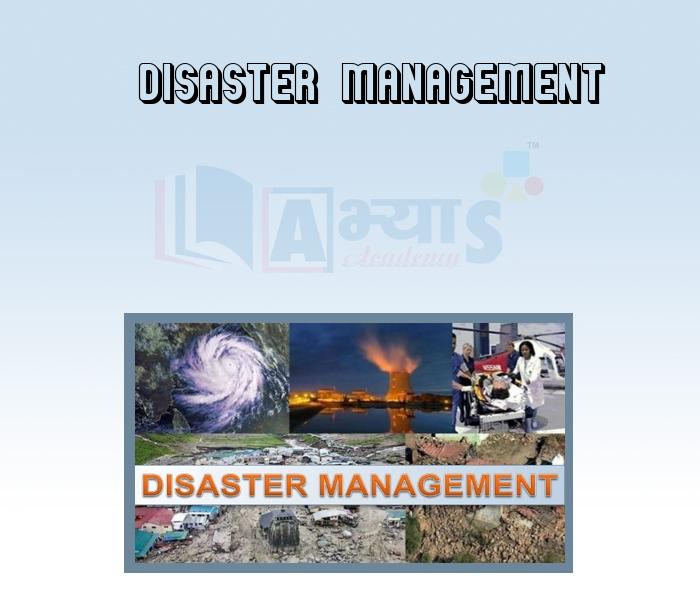Disaster Management










Disaster Management
Disaster Management: India has been vulnerable to various natural disasters duc to its geo-climatic conditions. About 60% of ite landmass is prone to earthquakes; over 40 million hectares is prone to floods; 68% of the area is susceptible to drought and out of 7,500 km of coastline, close to 5,700 km is prone to cyclones, the Tsunami disaster, which struck five coastal States/Union Territories (UTs) in India in December 2004 has further highlighted the vulnerability of the coastal areas. Fire incidents, industrial accidents and othen man-made disasters involving chemical, biological and radioactive materials are additional hazards, All this has underscored the need for strengthening mitigation, preparedness and response measures.The basic responsibility for undertaking rescue, reliet and rehabilitation measures in the event of a disaster rests with the concerned State Government. The Central Government supplements the efforts of the State Governments by providing logistic and financial support in case of severe natural calamities. The logistic support includes deployment of aircrafts and boats, specialist teams of Armed Forces, Central paramilitary forces and personnel of National Disaster Response Force (NDRF), and makes arrangements for relief materials and essential commodities including medical stores, restoration of critical infrastructure facilities including communication network and such other assistance as may be required by the affected States to meet the situation effectively.
Students / Parents Reviews [10]
One of the best institutes to develope a child interest in studies.Provides SST and English knowledge also unlike other institutes. Teachers are co operative and friendly online tests andPPT develope practical knowledge also.

Aman Kumar Shrivastava
10thMy experience with Abhyas is very good. I have learnt many things here like vedic maths and reasoning also. Teachers here first take our doubts and then there are assignments to verify our weak points.

Shivam Rana
7thIt has a great methodology. Students here can get analysis to their test quickly.We can learn easily through PPTs and the testing methods are good. We know that where we have to practice

Barkha Arora
10thBeing a parent, I saw my daughter improvement in her studies by seeing a good result in all day to day compititive exam TMO, NSO, IEO etc and as well as studies. I have got a fruitful result from my daughter.

Prisha Gupta
8thMy experience was very good with Abhyas academy. I am studying here from 6th class and I am satisfied by its results in my life. I improved a lot here ahead of school syllabus.

Ayan Ghosh
8thAbhyas Methodology is very good. It is based on according to student and each child manages accordingly to its properly. Methodology has improved the abilities of students to shine them in future.

Manish Kumar
10thIt was good as the experience because as we had come here we had been improved in a such envirnment created here.Extra is taught which is beneficial for future.

Eshan Arora
8thI have spent a wonderful time in Abhyas academy. It has made my reasoning more apt, English more stronger and Maths an interesting subject for me. It has given me a habbit of self studying

Yatharthi Sharma
10thMy experience with Abhyas academy is very good. I did not think that my every subject coming here will be so strong. The main thing is that the online tests had made me learn here more things.

Hiya Gupta
8thA marvelous experience with Abhyas. I am glad to share that my ward has achieved more than enough at the Ambala ABHYAS centre. Years have passed on and more and more he has gained. May the centre flourish and develop day by day by the grace of God.
